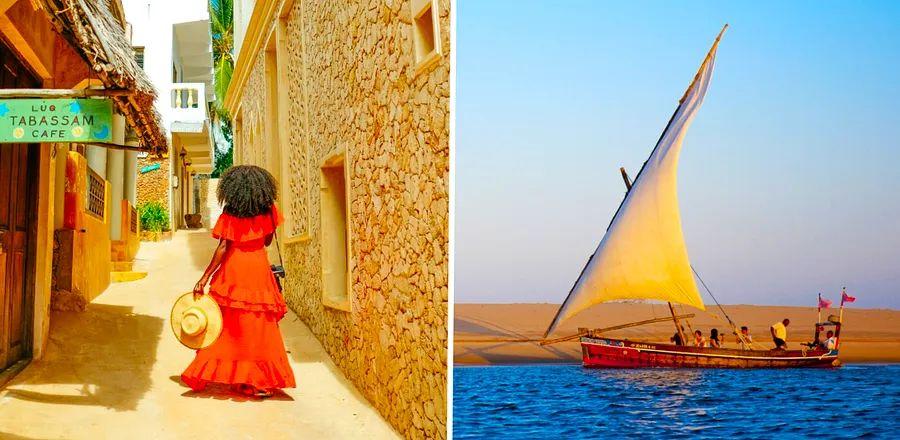Exploring this East African island can be an adventure in itself, where losing your way is part of the experience.

Strolling through the sandy, winding paths of Shela—a village on the southeast coast of Kenya’s Lamu Island—requires a leap of faith. The island is largely devoid of motor vehicles, with alleyways narrow enough for pedestrians and donkeys only. Even after numerous visits, I’ve come to accept that I will inevitably get lost. However, I have faith that Shela is compact enough that I will eventually rediscover that intricately carved wooden door I noticed before, the vibrant fuchsia bougainvillea, or the mosque echoing the off-key call to prayer, guiding me back on my path.
Lamu Island, home to around 25,000 residents today, has roots dating back over 700 years. Its rich Swahili culture represents a unique blend of Bantu, Arab, Persian, European, and Indian influences. For centuries, Lamu served as a key trading hub for the Arab world, exchanging minerals, mangrove wood, game trophies, and, tragically, enslaved individuals—a practice that was prohibited in 1873. The island’s many mosques and the annual Maulidi festival, which commemorates the birth of the prophet Muhammad each October, have solidified its status as an important center for Islam.
The island has largely avoided large-scale development, and this is a source of pride for its inhabitants. Lamu Town, just a short motorboat ride north of Shela, was designated a UNESCO World Heritage site in 2001 for its tightly-knit and well-preserved community. Visitors are kindly asked to cover their shoulders and knees in public spaces to honor the island’s conservative customs. Most structures reflect traditional Swahili architectural styles: thick, whitewashed walls often embellished with coral; barazas, or terraces; and ornately carved wooden doors. In 2019, Lamu successfully turned down a proposal to construct a coal power plant in the region, citing potential irreversible damage to the local culture and environment.
“Our government ensures that the culture of Lamu will thrive for many years ahead,” remarks Muhidin Athman, assistant to the speaker of Lamu County. “If you wish to bring your Jet Ski or motorbike, nobody welcomes that on the island.”
While visitors can fill their days with activities like snorkeling and kitesurfing, an itinerary packed with action overlooks Lamu's true charm: the opportunity to slow down and savor life. Most accommodations, like the Jannah in Shela—established by Anna Trzebinski, who also founded the art-centric Eden Hotel in Nairobi—feature stylish Swahili-inspired furniture perfect for relaxation. Shoppers can explore boutiques such as Aman for flowing attire and Natural Lamu for skincare essentials. Guided walking tours of Lamu Town reveal its unique historical narrative.
Some of my most serene experiences in Lamu unfolded aboard wooden dhow sailboats, where we savored samosas while marveling at the contrast of white egrets against the lush mangrove forests. One night, during a new moon, my friends and I sailed at midnight. With no light pollution, countless stars twinkled in the dark sky, and to our joyful amazement, bioluminescent creatures illuminated the waters below. Embracing spontaneity, we leapt into the water, enveloping ourselves in a magical green glow.
Essential tips for organizing your journey
- Accommodation: The newly refurbished Peponi Hotel in Shela offers stunning sea vistas, a gourmet fusion restaurant, and refreshing lime-and-ginger dawa cocktails.
- Must-Try Dish: Swahili curry, a staple on the island, features rich coconut milk and a blend of spices like cinnamon, turmeric, and cloves.
- Local Legend: It is said that a Chinese vessel sank near the Lamu archipelago 600 years ago, with survivors making their way to Shanga Village, where their descendants reside to this day.
For our complete list of top destinations this year, check out Where to Go in 2024.
Evaluation :
5/5



